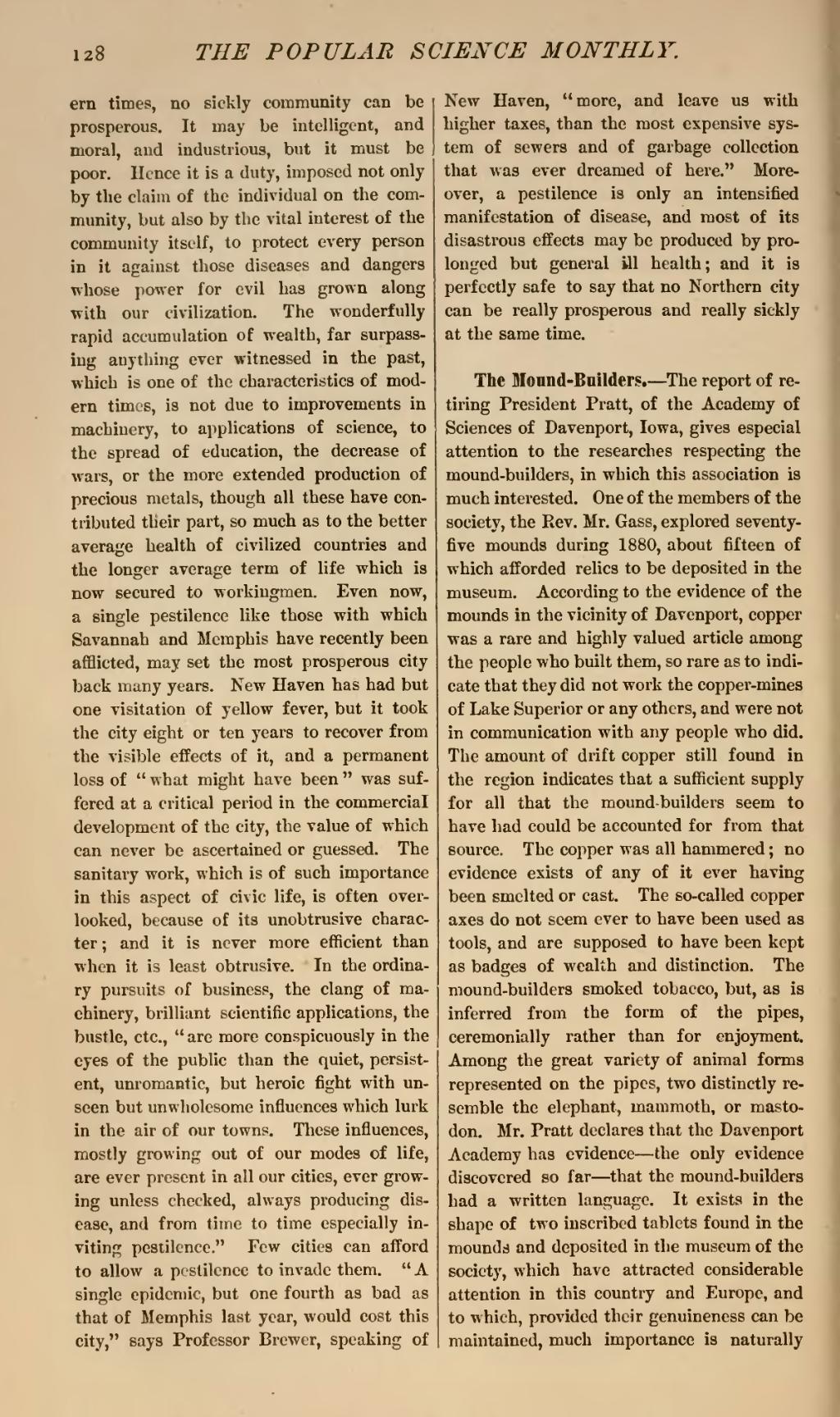ern times, no sickly community can be prosperous. It may be intelligent, and moral, and industrious, but it must be poor. Hence it is a duty, imposed not only by the claim of the individual on the community, but also by the vital interest of the community itself, to protect every person in it against those diseases and dangers whose power for evil has grown along with our civilization. The wonderfully rapid accumulation of wealth, far surpassing anything ever witnessed in the past, which is one of the characteristics of modern times, is not due to improvements in machinery, to applications of science, to the spread of education, the decrease of wars, or the more extended production of precious metals, though all these have contributed their part, so much as to the better average health of civilized countries and the longer average term of life which is now secured to workingmen. Even now, a single pestilence like those with which Savannah and Memphis have recently been afflicted, may set the most prosperous city back many years. New Haven has had but one visitation of yellow fever, but it took the city eight or ten years to recover from the visible effects of it, and a permanent loss of "what might have been" was suffered at a critical period in the commercial development of the city, the value of which can never be ascertained or guessed. The sanitary work, which is of such importance in this aspect of civic life, is often overlooked, because of its unobtrusive character; and it is never more efficient than when it is least obtrusive. In the ordinary pursuits of business, the clang of machinery, brilliant scientific applications, the bustle, etc., "are more conspicuously in the eyes of the public than the quiet, persistent, unromantic, but heroic fight with unseen but unwholesome influences which lurk in the air of our towns. These influences, mostly growing out of our modes of life, are ever present in all our cities, ever growing unless checked, always producing disease, and from time to time especially inviting pestilence." Few cities can afford to allow a pestilence to invade them. "A single epidemic, but one fourth as bad as that of Memphis last year, would cost this city," says Professor Brewer, speaking of New Haven, "more, and leave us with higher taxes, than the most expensive system of sewers and of garbage collection that was ever dreamed of here." Moreover, a pestilence is only an intensified manifestation of disease, and most of its disastrous effects may be produced by prolonged but general ill health; and it is perfectly safe to say that no Northern city can be really prosperous and really sickly at the same time.
The Mound-Builders.—The report of retiring President Pratt, of the Academy of Sciences of Davenport, Iowa, gives especial attention to the researches respecting the mound-builders, in which this association is much interested. One of the members of the society, the Rev. Mr. Gass, explored seventy-five mounds during 1880, about fifteen of which afforded relics to be deposited in the museum. According to the evidence of the mounds in the vicinity of Davenport, copper was a rare and highly valued article among the people who built them, so rare as to indicate that they did not work the copper-mines of Lake Superior or any others, and were not in communication with any people who did. The amount of drift copper still found in the region indicates that a sufficient supply for all that the mound-builders seem to have had could be accounted for from that source. The copper was all hammered; no evidence exists of any of it ever having been smelted or cast. The so-called copper axes do not seem ever to have been used as tools, and are supposed to have been kept as badges of wealth and distinction. The mound-builders smoked tobacco, but, as is inferred from the form of the pipes, ceremonially rather than for enjoyment. Among the great variety of animal forms represented on the pipes, two distinctly resemble the elephant, mammoth, or mastodon. Mr. Pratt declares that the Davenport Academy has evidence—the only evidence discovered so far—that the mound-builders had a written language. It exists in the shape of two inscribed tablets found in the mounds and deposited in the museum of the society, which have attracted considerable attention in this country and Europe, and to which, provided their genuineness can be maintained, much importance is naturally
